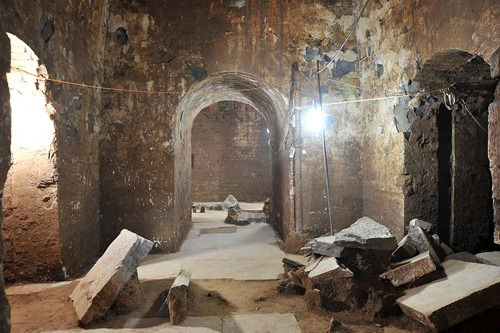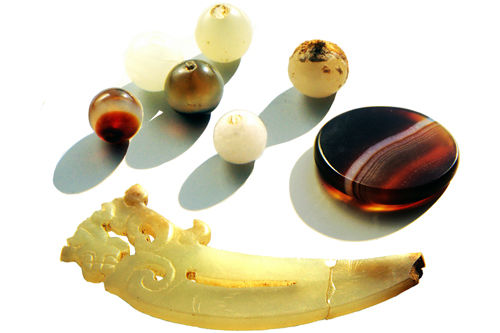Tomb of legendary ruler unearthed
Legend has it that Cao Cao, King Wu of Wei kingdom in the Three Kingdoms period (AD 208 to 280), had built 72 tombs to thwart tomb raiders.

Experts, however, have always doubted this, believing it was more a fabrication that reflected Cao's political cunning as portrayed in the classic Romance of the Three Kingdoms. Now, they have come up with solid evidence to prove it wrong.
Archaeological officials confirmed yesterday the discovery of Cao's mausoleum in Xigaoxue, a village in Anyang county of Henan province, which, much to the surprise of many, was indeed built as austerely as recorded in historical archives.
"Excavation has been going on for nearly one year, and we'll come up with further evidence. But even based on what we've got, we can tell for sure that the mausoleum belongs to Cao Cao," Guan Qiang, deputy director of the department of cultural heritage conservation at the State Administration of Cultural Heritage (SACH), told a briefing in Beijing.
Experts also unearthed bones of three people, through which they identified their ages: One male of around 60, and two women, one in her 50s and the other between 20 and 25.
Experts believe the male was Cao, the elder woman his empress who died in AD 230 and was buried at Cao's tomb with her close companion, the younger woman.
The tomb was discovered in December last year when workers at a nearby kiln were digging for mud to make bricks. The discovery was not reported and local authorities knew of it only when they seized stone tablets carrying inscriptions of "King Wu of Wei" - Cao's posthumous reference - from some tomb raiders.
The culprits claimed to have stolen the tablets from the tomb, according to Sun Yingmin, vice-director of the Henan Provincial Cultural Relics Administration (HPCRA).
Over the past year, archaeologists have recovered more than 250 relics from the west-to-east two-chamber tomb that covers an area of 740 sq m. Among them are stone paintings featuring social life of Cao's time, stone tablets bearing inscriptions of sacrificial objects, and Cao's personal belongings bearing the inscription "personal belongings frequently used by King Wu of Wei" such as the one found on a stone pillow.
Hao Benxing, an HPCRA researcher, said it was hard to tell if the mausoleum was robbed before the damage done by recent tomb raiders.

 0 Comments
0 Comments







Go to ForumComments